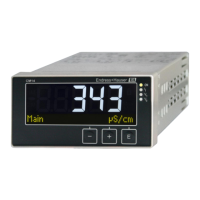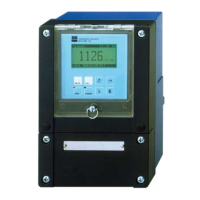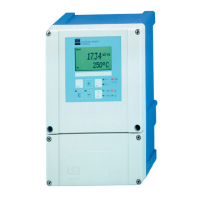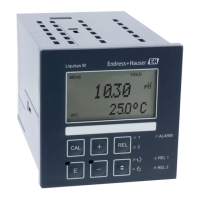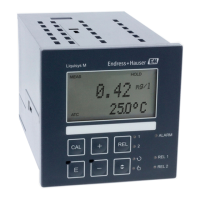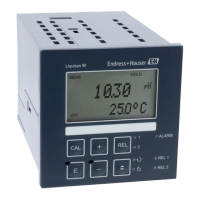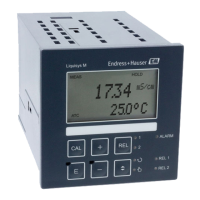Calibration and adjustment CM14
22
7 Calibration and adjustment
7.1 Definitions
7.1.1 Calibration (as per DIN 1319):
Determining the relationship between the measured or expected value of the output variable
and the corresponding true or correct value of the measured variable (input variable) for a
measuring device under specified conditions.
During calibration, there is no intervention that changes the measuring instrument.
7.1.2 Adjustment
An adjustment corrects the value displayed by a measuring device, in other words the measured/
displayed value (the actual value) is corrected so that the reading agrees with the correct, set
value.
The value determined during calibration is used to calculate the correct measured value and
saved in the sensor.
7.2 pH sensors
The pH value is calculated using the Nernst equation
pH = -lg(aH+), aH+ ... activity of the hydrogen ions
Ui ... raw measured value in mV
U0 ... zero point (=voltage at pH 7)
R ... relative gas constant (8.3143 J/molK)
T ... temperature [K]
F ... Faraday constant (26.803 Ah)
The slope of the Nernst equation (–2.303 RT/F) is known as the Nernst factor and is
–59.16 mV/pH at 25 °C (77 °F).
The smaller the slope, the less sensitive the measurement, and the accuracy deteriorates
particularly in the low measuring range.
The calibration provides important information on the condition of your sensor and the quality
of the pH measurement.
The service life of a pH glass electrode is limited. One of the reasons for this is the deterioration
and aging of the pH-sensitive membrane glass. This aging causes the gel-like layer to change and
become thicker over time.
Symptoms of aging include:
• Higher membrane resistance
• Slow response
• Decrease in the slope

